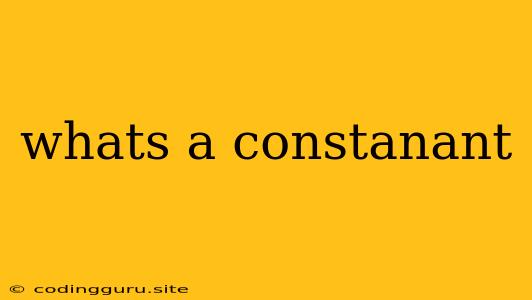What's a Consonant?
Let's dive into the world of consonants, exploring what they are, how they work, and why they're so important in language!
What are Consonants?
In the realm of linguistics, consonants are the building blocks of speech sounds that are characterized by a partial or complete obstruction of airflow in the vocal tract. Unlike vowels, which are produced with a relatively open vocal tract allowing for free airflow, consonants involve a narrowing or blockage of the airflow, creating a distinct sound.
How are Consonants Produced?
Consonants are produced through a combination of three key factors:
-
Place of Articulation: This refers to the point in the vocal tract where the airflow is obstructed. Different consonants are formed by obstructing the airflow at different locations, such as the lips, teeth, or back of the tongue. For example, the "p" sound is formed by closing the lips, while the "k" sound is formed by blocking airflow at the back of the tongue against the soft palate.
-
Manner of Articulation: This describes how the airflow is obstructed. Different consonants are produced with different levels of obstruction, ranging from a complete closure (as in "p" or "t") to a partial constriction (as in "s" or "f").
-
Voicing: This refers to whether the vocal cords vibrate during the production of the consonant. Voiced consonants are produced with vibrating vocal cords (like "b", "d", or "z"), while unvoiced consonants are produced without vocal cord vibration (like "p", "t", or "s").
Examples of Consonants
Here are some common consonants in the English language, along with their place and manner of articulation:
| Consonant | Place of Articulation | Manner of Articulation | Voiced/Unvoiced |
|---|---|---|---|
| b | Bilabial (both lips) | Stop (complete closure) | Voiced |
| p | Bilabial (both lips) | Stop (complete closure) | Unvoiced |
| t | Alveolar (tongue tip behind teeth) | Stop (complete closure) | Unvoiced |
| d | Alveolar (tongue tip behind teeth) | Stop (complete closure) | Voiced |
| k | Velar (back of tongue against soft palate) | Stop (complete closure) | Unvoiced |
| g | Velar (back of tongue against soft palate) | Stop (complete closure) | Voiced |
| f | Labiodental (lower lip against upper teeth) | Fricative (partial closure) | Unvoiced |
| v | Labiodental (lower lip against upper teeth) | Fricative (partial closure) | Voiced |
| s | Alveolar (tongue tip behind teeth) | Fricative (partial closure) | Unvoiced |
| z | Alveolar (tongue tip behind teeth) | Fricative (partial closure) | Voiced |
| m | Bilabial (both lips) | Nasal (airflow through the nose) | Voiced |
| n | Alveolar (tongue tip behind teeth) | Nasal (airflow through the nose) | Voiced |
Why are Consonants Important?
Consonants play a crucial role in language:
- Distinguishing Sounds: Consonants help differentiate words that are similar in terms of their vowel sounds. For instance, "cat" and "cot" sound very similar, but the initial consonant "c" distinguishes them.
- Adding Clarity and Precision: Consonants contribute to the overall clarity and precision of speech. They help us articulate words more effectively and understand each other better.
- Creating Rhythm and Flow: Consonants and vowels work together to create the rhythm and flow of language. The alternation between consonant sounds and vowel sounds creates a pleasing auditory experience.
Consonant Clusters
Consonants can also be combined into clusters, forming complex sounds at the beginning or end of words. For example, "str" in "street" or "th" in "that." These clusters add complexity and richness to language.
Conclusion
Understanding consonants is essential for appreciating the beauty and complexity of language. They are fundamental building blocks that shape the sounds we make, allowing us to communicate effectively and express ourselves in a meaningful way. By learning about consonants, we gain a deeper understanding of how language works and how it has evolved over time.
